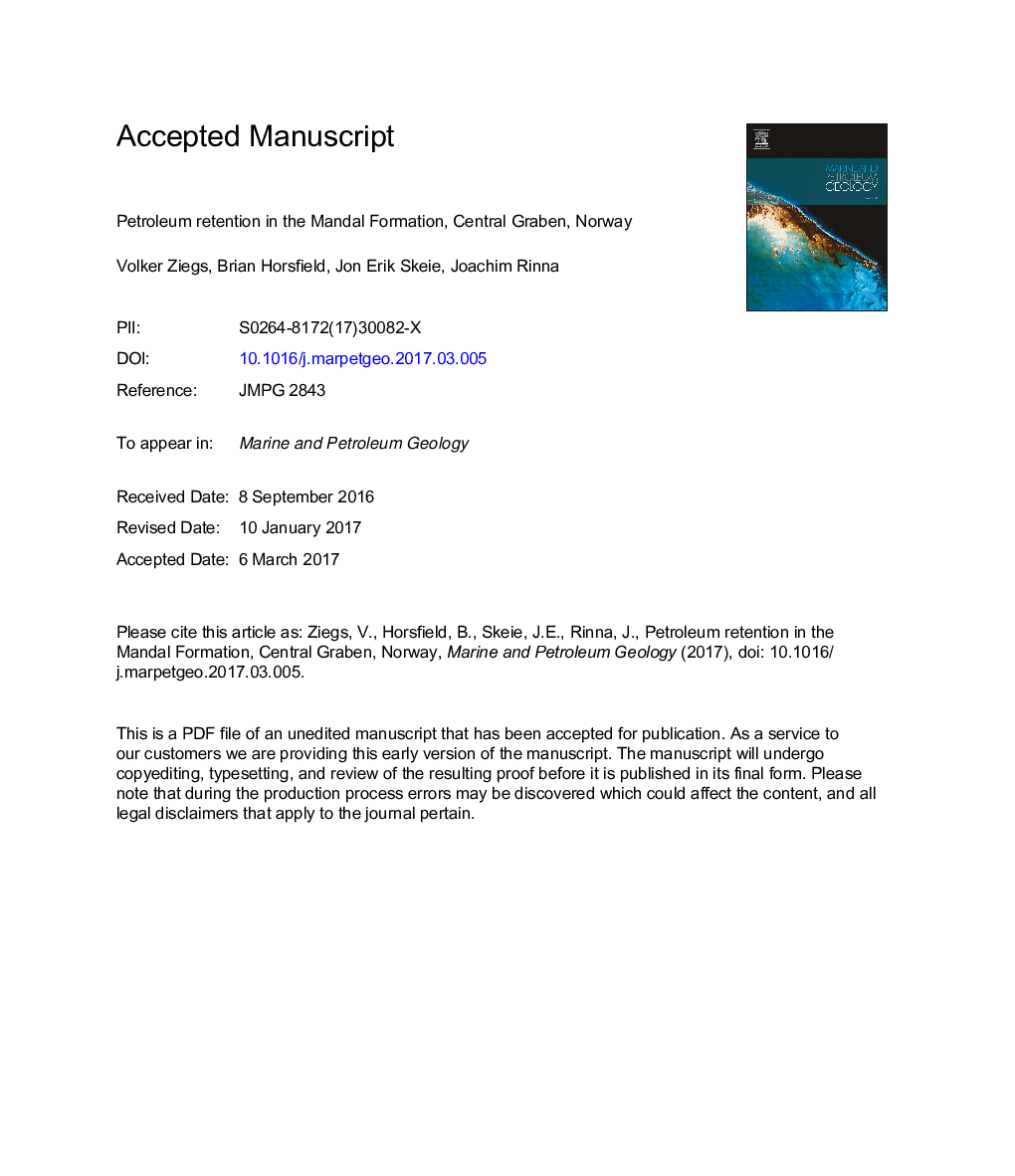| Article ID | Journal | Published Year | Pages | File Type |
|---|---|---|---|---|
| 5782157 | Marine and Petroleum Geology | 2017 | 74 Pages |
Abstract
The Mandal Formation is in part a very prolific source rock containing mainly Type II organic matter with <12Â wt.-% TOC and HIÂ <Â 645Â mg HC/g TOC but Type III-influenced organofacies are also present. The formation is therefore to varying degrees heterogeneous. Here we show, using geochemical mass balance modelling, that the petroleum expulsion efficiency of the Mandal Formation is relatively low as compared to the Upper Jurassic Draupne Formation, the major source rock in the Viking Graben system. Using maturity series of different initial source quality from structurally distinct regions and encompassing depositional environments from proximal to distal facies, we have examined the relationship between free hydrocarbon retention and organic matter structure. The aromaticity of the original and matured petroleum precursors in the Mandal source rock plays a major role in its gas retention capacity as cross-linked monoaromatic rings act on the outer surface of kerogen as sorptive sites. However, oil retention is a function of both kerogen and involatile bitumen compositions. Slight variations in total petroleum retention capacities within the same kerogen yields suggest that texture of organic matter (e.g. organic porosity) could play a role as well.
Related Topics
Physical Sciences and Engineering
Earth and Planetary Sciences
Economic Geology
Authors
Volker Ziegs, Brian Horsfield, Jon Erik Skeie, Joachim Rinna,
